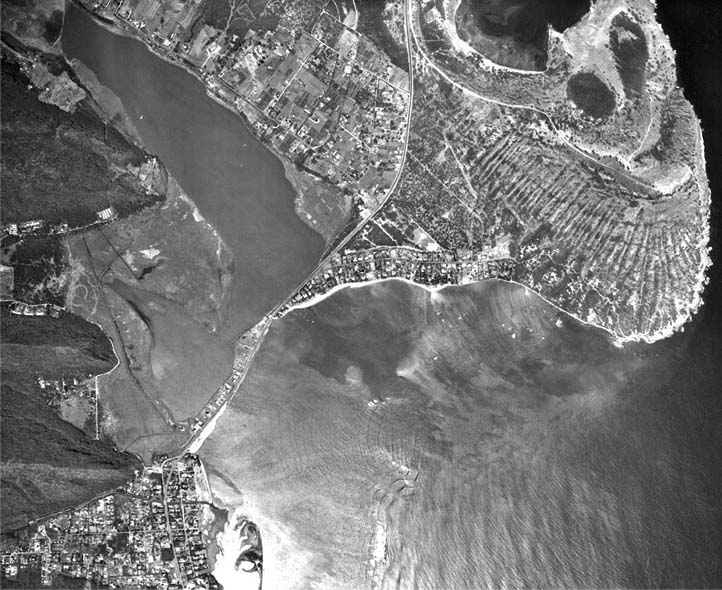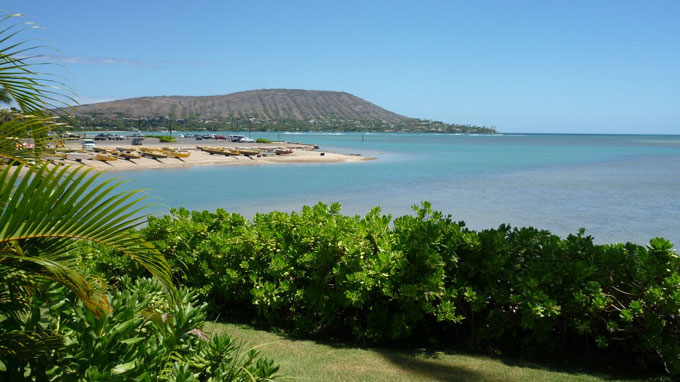For most of the 1800s, leaders in Washington were concerned that Hawaiʻi might become part of a European nation’s empire. During the 1830s, Britain and France entered into treaties giving them economic privileges.
In 1842, Secretary of State Daniel Webster sent a letter to Hawaiian agents in Washington affirming US interests in Hawaiʻi and opposing annexation by any other nation. He also proposed to Great Britain and France that no nation should seek special privileges or engage in further colonization of the islands.
In 1849, the United States and Hawaiʻi concluded a treaty of friendship that served as the basis of official relations between the parties. (state-gov)
With these various interests interested in Hawaiʻi, let’s see who were the leaders at the time: Victoria was Queen of England, Jules Grévy was President of France, Chester Alan Arthur was the US President and Kalākaua was King of Hawaiʻi. Let’s look at their respective Royal Residences/State houses (at about the time ʻIolani Palace was completed (1882.))
Buckingham Palace
Buckingham Palace gets its name from an eighteenth-century Tory politician. John Sheffield, 3rd Earl of Mulgrave and Marquess of Normanby, was created Duke of Buckingham in 1703. He built Buckingham House for himself as a grand London home.
George III bought Buckingham House in 1761 for his wife Queen Charlotte to use as a comfortable family home close to St James’s Palace, where many court functions were held. Buckingham House became known as the Queen’s House, and 14 of George III’s 15 children were born there.
Queen Victoria was the first sovereign to take up residence in July 1837, just three weeks after her accession, and in June 1838 she was the first British sovereign to leave from Buckingham Palace for a Coronation.
Since then, Buckingham Palace has served as the official London residence of Britain’s sovereigns and today is the administrative headquarters of the Monarch.
Buckingham Palace has 775 rooms. These include 19 State rooms, 52 Royal and guest bedrooms, 188 staff bedrooms, 92 offices and 78 bathrooms.
It houses the offices of those who support the day-to-day activities and duties of The Queen and The Duke of Edinburgh and their immediate family. The Palace is also the venue for great Royal ceremonies, State visits and investitures.
The Throne Room, sometimes used during Queen Victoria’s reign for Court gatherings and as a second dancing room, is dominated by a proscenium arch supported by a pair of winged figures of ‘victory’ holding garlands above the ‘chairs of state’.
It is in the Throne Room that The Queen, on very special occasions like Jubilees, receives loyal addresses. Another use of the Throne Room has been for formal wedding photographs.
George IV’s original palace lacked a large room in which to entertain. Queen Victoria rectified that shortcoming by adding in 1853-5 what was, at the time of its construction, the largest room in London.
The balcony of Buckingham Palace is one of the most famous in the world. The first recorded Royal balcony appearance took place in 1851, when Queen Victoria stepped onto it during celebrations for the opening of the Great Exhibition. It was King George VI who introduced the custom of the RAF fly-by at the end of Trooping the Colour, when the Royal Family appear on the balcony.
Élysée Palace
The Élysée Palace is the official residence of the President of the French Republic, containing his office, and is where the Council of Ministers meets. It is located near the Champs-Élysées in the 8th arrondissement of Paris, the name Élysée deriving from Elysian Fields, the place of the blessed dead in Greek mythology.
In the early eighteenth century, the current suburb Saint-Honoré was just a plain crossed pasture and vegetable crops, and a few houses with thatched roof. In 1718, a field here was sold to Henri-Louis de la Tour d’Auvergne, Comte d’Evreux (they built a hotel for the residence of the Count of Evreux.)
Built and decorated between 1718 and 1722, the hotel was arranged according to the principles of architecture in vogue at the time. It remains one of the best examples of the classical model, and was considered “the most beautiful lodge near Paris.”
In 1786, it was given to Louis XVI, who later sold it in 1787 to his cousin, the Duchess of Bourbon. The hotel took the name of its owner “Hotel de Bourbon.” During the Revolution and after the arrest of the Duchess in April 1793, the Hôtel de Bourbon later took on different purposes.
Released in 1795, to support herself, the Duchess of Bourbon began to rent the ground floor of the hotel and gave permission to his tenant, a merchant named Hovyn, organize dances in the lounges and garden. It was at this time that the hotel took its name Elysée by reference to the nearby promenade.
Later, Napoleon resided here (March 1809) until his departure for the Austrian campaign; he took possession of the Elysée in 1812, which witnessed the last hours of the Empire – he signed his abdication there. The Elysee Palace later became the residence of Tsar Alexander during the occupation of Paris by the Allies and was made available to the Duke of Wellington in November 1815.
December 12, 1848, the National Assembly by decree assigned the “Elysée National” as Residence of the President of the Republic. The Prince-President Louis Napoleon moved there December 20, 1848. After the fall of the Empire, the Palace resumed the name of Elysée National. The Elysée Palace remains the official residence of French presidents.
White House
George Washington, the new nation’s first President, selected the site for the White House in 1791. The cornerstone was laid in 1792 and a competition design submitted by Irish-born architect James Hoban was chosen.
After eight years of construction, President John Adams and his wife, Abigail, moved into the unfinished house in 1800. During the War of 1812, the British set fire to the President’s House in 1814. (Every president since John Adams has occupied the White House.)
It was rebuilt and President James Monroe moved into the building in 1817. During Monroe’s administration, the South Portico was constructed in 1824; Andrew Jackson oversaw the addition of the North Portico in 1829.
In 1902, President Theodore Roosevelt began a major renovation of the White House, including the relocation of the president’s offices from the Second Floor of the Residence to the newly constructed temporary Executive Office Building
The Executive Office Building is now known as the West Wing. Roosevelt’s successor, President William Howard Taft, had the Oval Office constructed within an enlarged office wing.
At various times in history, the White House has been known as the “President’s Palace,” the “President’s House” and the “Executive Mansion.” President Theodore Roosevelt officially gave the White House its current name in 1901.
President Theodore Roosevelt (1901-09) was not only the first President to ride in an automobile, but also the first President to travel outside the country when he visited Panama. President Franklin Roosevelt (1933-45) was the first President to ride in an airplane.
There are 132 rooms, 35 bathrooms, and 6 levels in the Residence. There are also 412 doors, 147 windows, 28 fireplaces, 8 staircases and 3 elevators.
ʻIolani Palace
When the seat of Hawaiian government was being established in Lāhainā in the 1830s, Hale Piula (iron roofed house,) a large two-story stone building, was built for Kamehameha III to serve as his royal palace.
But, by 1843, the decision was made to permanently place a palace in Honolulu; Hale Piula was then used as a courthouse, until it was destroyed by wind in 1858 – its stones were used to rebuild a courthouse on Wharf Street.
In Honolulu, Kekūanāoʻa (father of two kings, Kamehameha IV and V) was building a house for his daughter (Princess Victoria Kamāmalu.) The original one story coral block and wooden building called Hanailoia was built in July 1844 on the grounds of the present ʻIolani Palace.
Kamehameha III built a home next door (on the western side of the present grounds, near the Kīna‘u gate, opening onto Richards Street;) he called the house “Hoihoikea,” (two authors spell it this way – it may have been spelled Hoihoiea) in honor of his restoration after the Paulet Affair of 1843. (Taylor and Judd)
“Hoihoikea” was a large, old-fashioned, livable cottage erected on the grounds a little to the west and mauka side of the old Palace. This served as home to Kamehameha III, Kamehameha IV and Kamehameha V: the Palace being used principally for state purposes. (Taylor)
The palace building was named Hale Ali‘i meaning (House of the Chiefs.) Kamehameha V changed its name to ʻIolani Palace in honor of his late brother and predecessor. (ʻIo is the Hawaiian hawk, a bird that flies higher than all the rest, and lani denotes heavenly, royal or exalted.)
The cornerstone for ʻIolani Palace was laid on December 31, 1879; construction was completed in 1882. In December of that year, King Kalākaua and Queen Kapiʻolani took up residence in their new home.
The first floor consists of the public reception areas – the Grand Hall, State Dining Room, Blue Room and the Throne Room. The second floor consists of the private suites – the King’s and Queen’s suites, Music Room, King’s Library, and the Imprisonment Room, where Queen Lili‘uokalani was held under house arrest for eight months in 1895.
Halekoa – ʻIolani Barracks – was completed in 1871 to house the Royal Guard. It was constructed with 4,000 coral blocks and contains an open courtyard surrounded by rooms once used by the guards as a mess hall, kitchen, dispensary, berth room and lockup. (In 1965, the structure was moved, stone by stone, to its present location to make room for the Hawaiʻi State Capitol.)
Kanaʻina Building – Old Archives – was built in 1906 and was the first building in the US erected solely for the custody and preservation of public archive materials.
The Palace area was originally enclosed by an eight-foot high coral block wall with wooden gates. Following the Wilcox Rebellion in 1889, it was lowered to 3’6″. In 1891, it was topped with the present painted iron fence.
After the overthrow of the monarchy, `Iolani Palace became the government headquarters for the Provisional Government, Republic, Territory and State of Hawai‘i. The palace was used for nearly three-quarters of a century as a government capitol building.
Government offices vacated the Palace in 1969 and moved to the newly constructed capitol building on land adjacent to the Palace grounds.
It’s interesting to note that the first electric lighting was installed in the White House in 1891 – after ʻIolani Palace (1886.) (Contrary to urban legend that it also pre-dated the British palace, Buckingham Palace had electricity prior to ʻIolani Palace (It was first installed in the Ball Room in 1883, and between 1883 and 1887 electricity was extended throughout Buckingham Palace.)
Some suggest ʻIolani Palace had telephones before the White House, too. However, the White House had a phone in 1879 (President Rutherford B. Hayes’ telephone number was “1”.) “By the fall of 1881 telephone instruments and electric bells were in place in the (ʻIolani) Palace.” (The Pacific Commercial, September 24, 1881)
Buckingham Palace beat them both. In 1876, Alexander Graham Bell, a Scot living in Boston, demonstrated his telephone to Queen Victoria who ordered a line from Osbourne House in the Isle of Wight to Buckingham Palace in London.







































